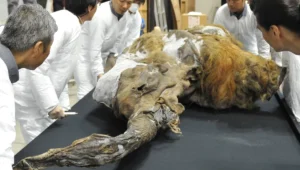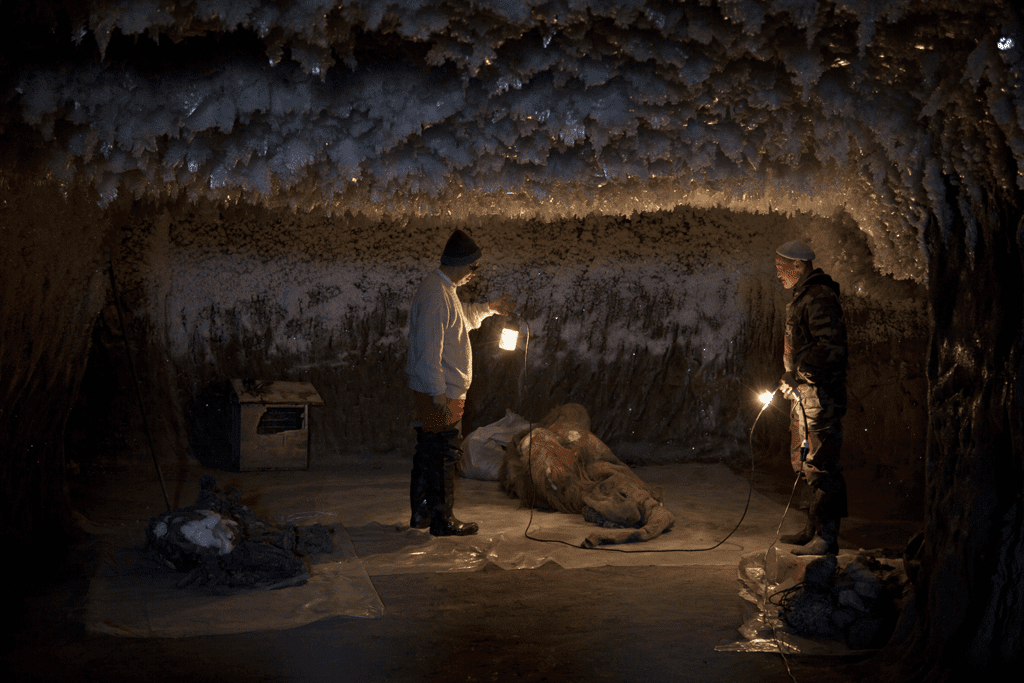Yuka Scientifics Studies | Part 3

This study presents the examination of the mummified brain of a Pleistocene woolly mammoth (Mammuthus primigenius), discovered in the permafrost of Yakutia, Siberia (Russia). Dated to between 39,440 and 38,850 years before present, this exceptional specimen provides a rare opportunity to compare the brain morphology of an extinct species with that of its closest extant relative, the African elephant (Loxodonta africana).
A detailed anatomical description of the mammoth brain is provided, complemented by a quantitative analysis of several brain structures. These observations are based both on direct inspection of the specimen and on qualitative and quantitative comparisons between computed tomography (CT) data from the mammoth and magnetic resonance imaging (MRI) data from three African elephant brains.
The brain examined, estimated to weigh between 4,230 and 4,340 g, exhibits a shape, size and macroscopic organisation characteristic of extant elephants. Quantitative comparisons of structures such as the amygdala, corpus callosum, cerebellum and gyrencephalic index reveal a strong similarity to the brain of L. africana. These results suggest the existence of a brain type common to the family Elephantidae. Furthermore, the pronounced resemblances between the woolly mammoth and the African elephant indicate that certain cerebral specialisations observed in modern elephants were already present in their extinct ancestor.
These descriptions are based on visual inspection of the actual specimen as well as qualitative and quantitative comparison of computed tomography imaging data obtained for the woolly mammoth in comparison with magnetic resonance imaging data from three African elephant brains.
In general, the brain of the woolly mammoth specimen examined, estimated to weigh between 4,230 and 4,340 g, showed the typical shape, size, and gross structures observed in extant elephants.
Quantitative comparative analyses of various features of the brain, such as the amygdala, corpus callosum, cerebellum,and gyrnecephalic index, all indicate that the brain of the woolly mammoth specimen examined has many similarities with that of modern African elephants.
The analysis provided here indicates that a specific brain type representative of the Elephantidae is likely to be a feature of this mammalian family.
In addition, the extensive similarities between the woolly mammoth brain and the African elephant brain indicate that the specializations observed in the extant elephant brain are likely to have been present in the woolly mammoth. J. Comp. Neurol.
¹ Research Institute of Human Morphology, Moscow 117418, Russia
² Academy of Sciences of the Sakha Republic (Yakutia), Yakutsk, Sakha Republic (Yakutia) 677007, Russia
³ School of Anatomical Sciences, Faculty of Health Sciences, University of the Witwatersrand, Parktown 2193, Johannesburg,
Republic of South Africa


